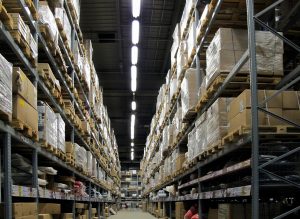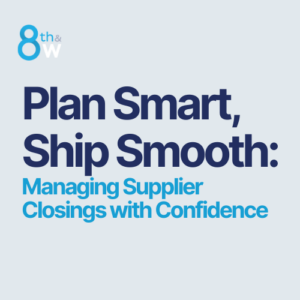Q: “Currently, each of our items has an in-stock threshold of 99%. Our buyer is asking when we will be at 100%. Is this feasible? How big of a difference is 1%? How do I handle this?”
 In retail, there will always be a push and pull between these competing demands: to drive sales and to maximize profitability of inventory investment. One would think maximum inventory = maximum sales = high profitability, but that is not necessarily true.
In retail, there will always be a push and pull between these competing demands: to drive sales and to maximize profitability of inventory investment. One would think maximum inventory = maximum sales = high profitability, but that is not necessarily true.
To drive sales:
A retailer must offer as much product as their customers might reasonably buy. If the product is out-of-stock, the potential for sales is zero.
To maximize profitability:
Retailers must control the flow of inventory to optimize turns.
It should be the mutual goal of both suppliers and retailers to ensure shelves are fully stocked at all times. You never want a customer who is looking for your product to leave the aisle empty-handed, and this requires a strong collaborative effort with your buyer, logistics team, and replenishment manager.
According to retail expert, Joel Graham, the average inventory threshold for Walmart suppliers is 95 – 98%. The minimum acceptable threshold — or the we’re-beginning-to worry-about-you range — is 95%.
So how important is that 1%? Very. Being out-of-stock once could mean your loyal customer changes their habit.
One thing suppliers need to keep in mind when striving for a 100% in-stock threshold is the potential for surplus inventory — or overstock. Due to order constraints such as minimum truckload and pallet minimum, ordering more product to boost those few out-of-stock stores could result in over-stocking 99% of your stores.
“In my experience with replenishment at Sam’s Club, a 100% in-stock threshold causes significant overstock issues over time, which presents challenges for both retailers and suppliers,” says Graham.
Expert Advice:
 “The key is to identify the root cause of your out-of-stocks. That will determine your best course of action. Find ways to work creatively with your buyer and logistics team, and also leverage your relationship with your replenishment manager. Their role is to control the flow of inventory and to help you manage your assets.”
“The key is to identify the root cause of your out-of-stocks. That will determine your best course of action. Find ways to work creatively with your buyer and logistics team, and also leverage your relationship with your replenishment manager. Their role is to control the flow of inventory and to help you manage your assets.”
Additional resources: Inventory Management



